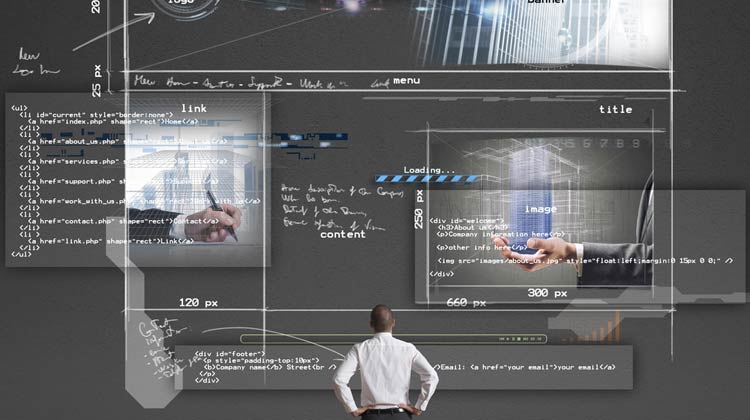Starting a website was the best thing I ever did. My website started an online business that has grown to six figures and is the hub of my personal brand. However,when I started, I knew nothing about the website maintenance costs that I now spend lots of money on.

Starting a website can be time-consuming and seemingly outside your comfort zone. Website maintenance costs are often overlooked when the gurus are selling the dream of online passive income or monthly recurring revenue. But, don’t worry, you can do it!
As you know, I like to tell it how it is. So, in this article, we,re going to pull back the curtain on the overheads of running a blog in 2016.
This article isn,t about trying to dissuade you from taking action – far from it. Many of these website maintenance costs accumulate over time and can be easily covered by your business’s growing income.
Figuring out how to get started
Before you start a website, there,s lots to figure out. Matters of niche selection aside, you need to choose a platform for your website, come up with a catchy domain name, and define your audience.
Then you need to learn how to use tools. This includes installing WordPress, navigating the dashboard, and working out how to publish your first blog post. After that, you,ll need to turn a fresh WordPress installation into a content rich resource that can attract an audience and generate an income.
In the beginning, time will be your biggest website maintenance cost.
When starting out, *time* is your biggest cost Click To TweetMost entrepreneurs will tell you that ordering a new domain name, opening a hosting account, and installing WordPress is all too easy. Putting in the time is what separates those who make it from those who don,t.
Startup costs
After you,ve put in the time to define your project and choose your tools, there are the startup costs to cover. At the very least, these include the domain name and an entry level shared hosting account.
Domain name registration is less than $10 a year. I would use Namecheap or GoDaddy (these and the following are affiliate links).
Entry level shared hosting account (less than $80/year): I would choose Bluehost or Hostgator (use “robcubbon25” for 25% off at Hostgator).
Thanks to the wealth of free WordPress plugins and themes, there,s no need to invest in premium tools for your website just yet.
These startup costs are all very reasonable and could see your new website up and running, for less than $100 for the entire first year.
First forays into premium tools
With your website looking presentable, the essential WordPress startup tasks taken care of, and a steady stream of content being published, you should soon start attracting visitors. At this point, it,s time to think about investing in one or two premium WordPress plugins to help accelerate growth and make life easier.
This could include a premium plugin like VaultPress that will ensure your website can not only be backed up but easily restored should something go wrong. Or you could make do with a free alternative like UpdraftPlus.
Investment in an email marketing service to help grow your list is now essential. You can go for a free MailChimp account or a basic Aweber starter deal for around $20/month to start off with. I have used both. I now use Active Campaign for my 15,000+ subscribers.
You might also want to consider investing in a premium WordPress caching plugin to take care of maintaining a fast loading website. I had bad experiences with the premium WordPress caching plugin Rocket.me. I’m happier to use WP Super Cache or W3 Total Cache to improve loading times. Again, this proves that you don’t always have to spend money to get the best online services.
This first set of improvements to your website could add another $100 onto your yearly website maintenance costs and maybe another $200 if you decide to do email marketing properly – and you really should!
Website upgrades
You,re up and running – increasing visitor numbers, making money and landing more clients, it,s time to think about scaling and reinvesting in your infrastructure.
This could include choosing a premium WordPress theme to give your website a more professional look. As many of you know, I can’t recommend Genesis highly enough. Buy the Genesis Theme Framework for $60 and a single theme (like the theme I’m using here, Magazine Pro) for $40 and there’s a great-looking, stable and future proof premium WordPress theme that will give you zero issues. You could even go as far as commissioning a bespoke design to help your website stand out from the crowd (see “Outsourcing” below).
Upgrading from free WordPress plugins and themes to commercial alternatives can help your website in many ways – from faster email list growth to a more secure website. However, switching to premium products can also see website maintenance costs quickly mount up, especially when you take annual license renewals into account. (Although, the above Genesis theme suggestion, as yet, doesn’t require any renewal! 🙂 )
Performance upgrades
Next up, there,s web hosting to think about. As your visitor numbers increase, that $4 a month shared hosting plan won,t cut it anymore. This would be a good time to start getting familiar with VPS or managed WordPress hosting and the idea of paying more each month in order to offer your visitors a better user experience.
For extra speed, reliability and security, I would graduate to VPSs (Virtual Private Servers) ($200-$1000/year) at SiteGround or, even better, at my current host: LiquidWeb.
Another new website maintenance cost you might want to start thinking about now is a Content Delivery Network (CDN) to help your site load even faster. A CDN will save a copy of your website and deliver it to users through a globally distributed network of proxy servers in multiple data centers across the world. I use MaxCDN. You get up to 100GB bandwidth/month for $7.50 per month or less. Great value, and it speeds up your site!
Upgrading your toolkit with additional premium WordPress plugins, such as better social sharing tools or more powerful caching and security plugins, can help save time and get better results.
Upgraded web hosting isn,t cheap but this website maintenance cost will only grow as the popularity of your website increases. So it’s an investment you can afford and need to make.
Check out my monthly expenses for running my business that are factored into my income reports.
Outsourcing
Finally, as your empire really starts to take off, you,ll be introduced to many new exciting and not-so-exciting demands on your time. With responding to blog comments, answering customer queries, or dealing with technical issues, you,ll learn that popularity comes at a price.
Then there,s custom logos and artwork to consider for your website and growing social media profiles.
Keeping your website ticking over takes up more of your precious time. At this point, those who embrace outsourcing are the ones who take their online businesses to the next level. And those who don’t outsource, are left behind.
Once you,re prepared to accept what you do best, and what others can do better, outsourcing will help you get back in touch with what inspired you to start your project in the first place. Shedding responsibilities like approving comments, updating plugins, or even writing blog posts, gives you the opportunity to save your most precious commodity of all – time.
Expect to pay anywhere between $15-30/hour for decent writers, designers and developers.

I’ve been outsourcing for years and I still make mistakes. Accept that you are going to lose money and outsource with patience and attention to detail. You just have to invest time and money into outsourcing at first. The rewards will come.
Invest time and money into outsourcing at first. The rewards will come. Click To TweetStart a website: You Can Do It!
Now that we,ve uncovered some of the truths of website maintenance costs, you might be having second thoughts about starting a website and taking those first steps towards an online business. Don,t!
One of the best things about creating a website is that the startup costs are low. You only need to invest more in sophisticated and expensive solutions as your business grows. By years 3 and 4, you might be spending a few $100 a month on your website, but in the first year, it can be a fraction of that.
There are countless ways to monetize a blog and worrying about which niche to focus on or being put off by what your hosting costs are going to be in year 5 are just forms of procrastination.
Spend slowly. Make do with low-cost alternatives, such as free plugins, themes, and entry level shared hosting. But just make sure you get started. And be just as sure to invest $$$ when you start making $$$.
Start with low website costs. But invest $$$ when you start making $$$! Click To TweetHas this answered your website maintenance cost questions? What,s holding you back from starting a website? Please share your thoughts in the comments below.

Another great articles and very interesting to read, thanks for sharing that wonderful useful information, given programming coding was very excellent and easily observe all provided information.
My pleasure, thanks for reading 🙂
Great article Rob.
Read through this it was nice to know that I’ve almost followed your advice to the letter without realising it!
When you first start out its easy for costs to get out of control and start throwing money at premium themes and plugins but with a little bit of time and patience you can find free alternatives for most of them to get you started.
I also found by paying my dues and not skipping straight to the premium services you actually learn a lot of valuable skills and gain knowledge whilst working your way through the ranks.
For me growing websites is equally been about me growing my skills and knowledge along the way.
Kate, couldn’t agree with you more. There’s a balance between buying the really great tools that save you a ton of time and going through the pain barrier of working stuff out. You do more of the latter than the former in the first few years. Thank you for your awesome comment. Great minds think alike!
Great article, it answers many questions a beginner wouldn’t know to ask. One more question, in developing a website, how much do you need to be concerned about security? Making sure your content remains in tact.
Very good question, Andre. There is loads you can do for security and one of the best articles about it is here on the WordPress.org website: Hardening WordPress. The three best pieces of advice I can give you is to protect your passwords, copy the site regularly and always keep updating the themes, plugins and the WordPress core. There are also some plugins (free and premium) that can help you with security. Too much to go into but I hope that helps.
WordPress can get pretty server intensive if you have alot of visitors. It does safe you alot of traffic if you put the pictures on external websites, there are many free image websites and they really take the load off your site. If you dont have the money yet for the big traffic then make sure you serve text-only.
Yes, WordPress is server intensive but anyone is able to run a fast loading WordPress site with images off cheap hosting. You just have to work with your host to improve you load speeds. I wouldn’t go text only.
Hi Rob. You’re one of the few people I have read who doesn’t say that you have to go out and buy all of the top-of-the-line tools on day one of a new blog. I completely agree with you. Start small and build it up as you gain traction and have money coming in.
I saw the comment from Aandelen about images. I think the biggest challenge there is that people upload huge images and then display them at a fraction of their size. If you are going to display an image at 300 pixels wide, scale it to that size before you upload it.
That also reduces the number of files on your server because WordPress automatically creates scaled copies of your images. If you upload a 1000 pixel wide images, WP will create 3 scaled copies. If you only need 300 pixels wide, upload one that is already scaled down and WP will only create one scaled copy at the thumbnail size, saving you 2 unused files on your server.
Hey Ben, thank you for your comment. Yes, gurus online will always recommend you buy the latest most expensive tools because that’ll give them the highest affiliate commissions!!!
Great post. One thing I’d like to add: It is VERY rare I work with a client who isn’t best served with a WordPress-based website. The great thing about WP is it’s a known quantity and immensely flexible. Don’t think your web designer is cutting corners by building your website in WP. A custom-coded website is vanity and will cost you a lot more $$$, not to mention more headaches..
Yes, I agree, Ben. 🙂